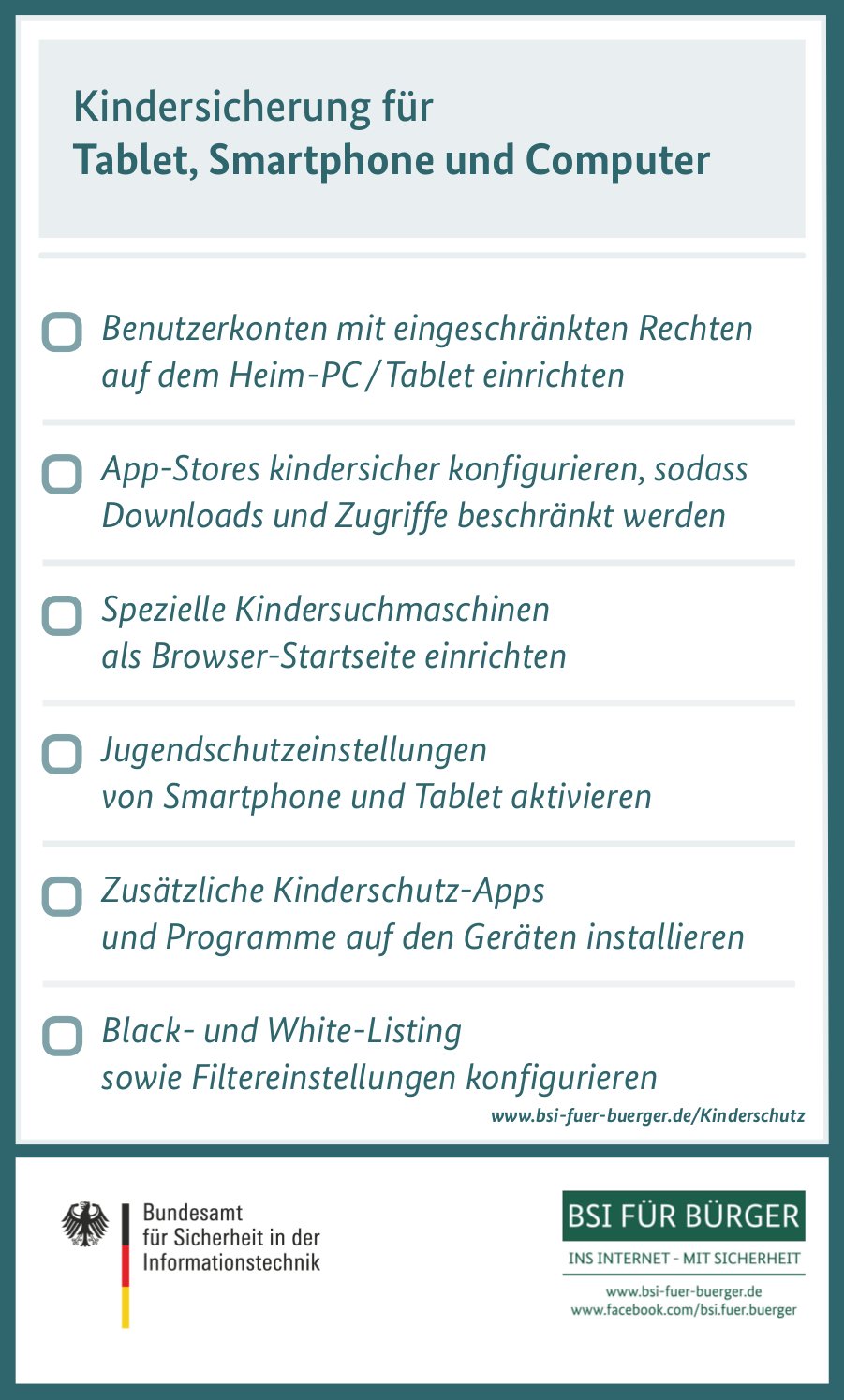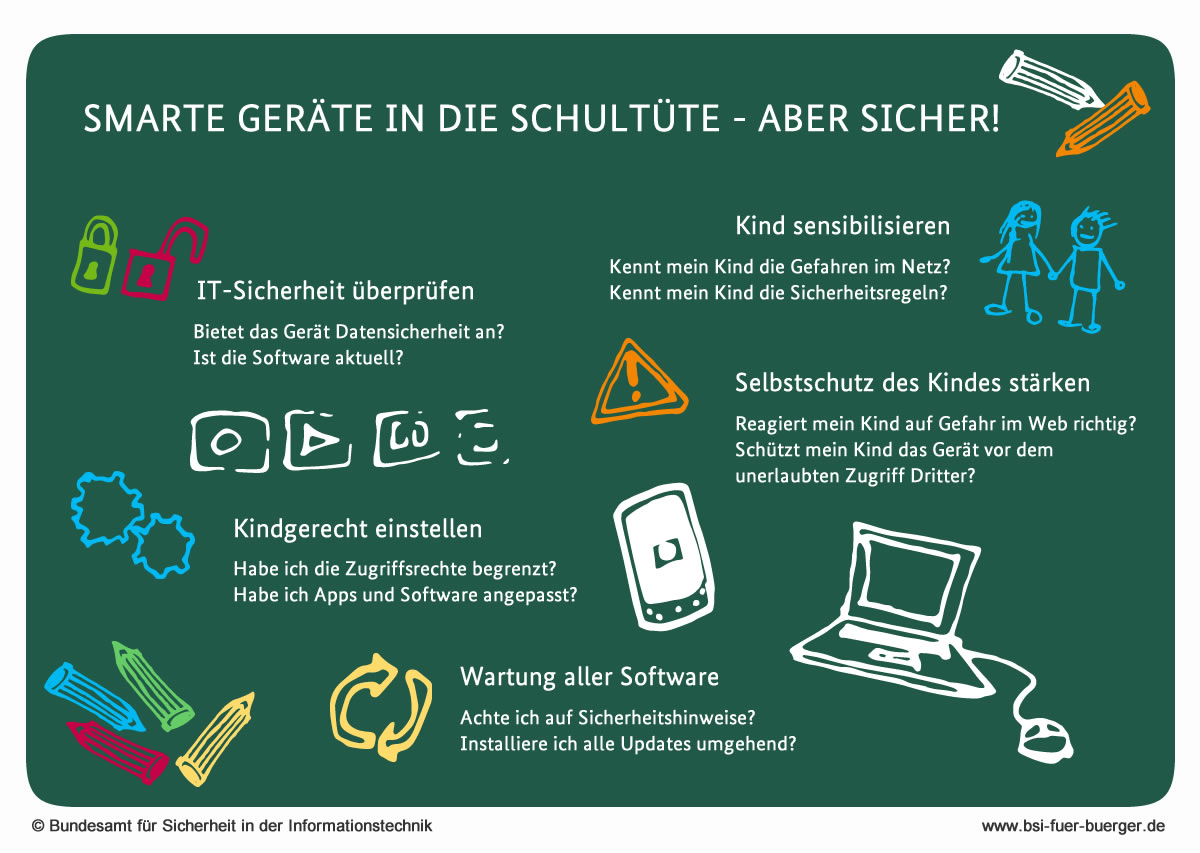Quickly chat with friends on the way to school, watch videos during the break and upload the latest photos to social networks at home. Almost all children (98%) already have the opportunity to use the Internet at home and on the go. This is the result of the current KIM study (Children + Media, Computer + Internet) .
Digital security for children is playing an increasingly important role, as elementary school students often have their own smartphones. Children take their first steps on the Internet from preschool age at the latest. From around the age of twelve, almost all children (94%) use online services. The most popular activities (at least once a week) include researching using a search engine (65%), writing messages via messenger services (62%) and watching videos (56%). The Internet therefore shapes the lives of children and young people from an early age. That's why it's advisable - as with all parenting topics - to deal with the topic of "safe internet use".

Know risks, take action
Most people initially associate risks and dangers for children on the Internet with content that is considered harmful to young people. These include online games that glorify violence or videos with pornographic images. Special child protection programs help to protect children from inappropriate content. But not everything can be regulated by technology: people can hide their true identity in forums and chat programs.
Contacts that entice children to reveal their personal information such as name or address are particularly risky. It is therefore important to give young Internet users an orientation about what can happen to them and how they should react to it.
At the same time, they are also exposed to all the risks on the Internet that threaten everyone there. These include, for example, malware that infects the computer and can cause great damage, for example by stealing passwords, encrypting data or making the computer part of a botnet. That's why parents and their children should take early measures to protect themselves.
Stay in touch, set up parental controls
What problems in the online world should parents talk to their children about? What should you pay attention to? A guideline for parent-child discussions on the topic of “online safety” (including video) provides orientation.
BSI checklist shows a selection of technical precautions for child protection .

Smart devices in the school bag – but safely!
Security begins with the purchase of internet-enabled devices. Therefore, when purchasing, parents or relatives and friends should carefully check whether the respective devices can be set up and protected for children. For example, ask whether updates will be made available for the devices in the future - these updates are essential for basic protection because they close security gaps.
After purchasing, you should set up the device accordingly. An equally important aspect is that your child can make their own decisions: Make them aware of the risks online and strengthen their ability to take care of themselves.

Source: BSI
Also read: Criminals send child and youth pornography content via Facebook
Notes:
1) This content reflects the current state of affairs at the time of publication. The reproduction of individual images, screenshots, embeds or video sequences serves to discuss the topic. 2) Individual contributions were created through the use of machine assistance and were carefully checked by the Mimikama editorial team before publication. ( Reason )

